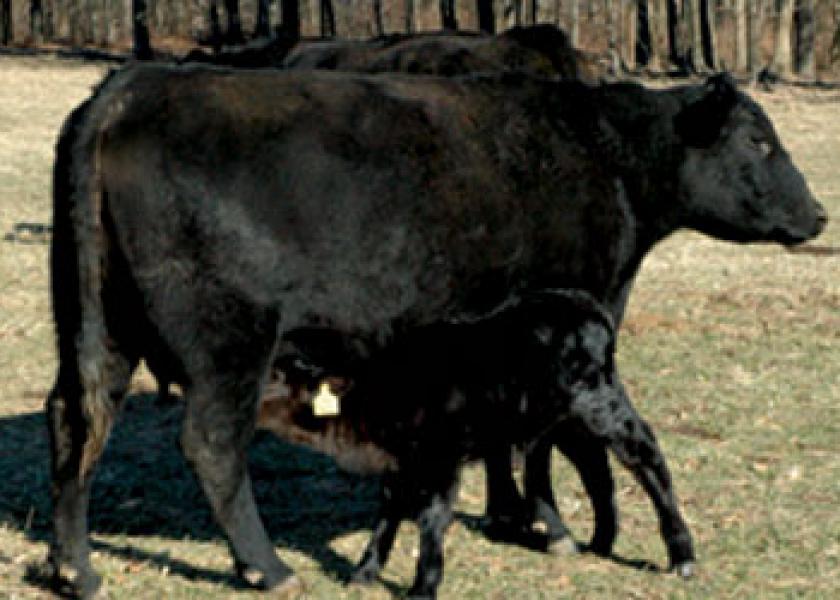There is More to Breeding Than Pregnancy Rates

South Dakota State University
Knowing the difference between conception rate and pregnancy rate has a big impact on cattle producer's bottom line, says Kalyn Waters, South Dakota State University (SDSU) Extension cow-calf field specialist.
"When producers sit down to figure out if they will use a straight Time AI (TAI) synchronization protocol (for example the 7-day CO-Synch+CIDR) or include heat detection (for example the Select Synch), or to calculate the success of their breeding season at its conclusion, this difference is key," Waters says.
Waters says there are three key calculations cattle producers should take into account: synchronization rate percent or the percentage of females detected in estrus compared to the total number of cattle synchronized; conception rate percent or the percentage of pregnant females compared to the number of females inseminated; and pregnancy rate percent or the percentage of pregnant females compared to the total number synchronized.
"Many people will just look at the overall pregnancy rate, however when evaluating the amount of labor and resources to the number of pregnancies achieved, all factors should be included. Using conception rates as an indicator of the overall success can be misleading. Conception rate does not take into account the number of females that were not inseminated."
Waters shares the following example: Herd A, 100 head of cattle were synchronized for breeding using the Select Synch protocol, 50 of them were detected in heat and inseminated, resulting in 70% of those females becoming pregnant. And, in Herd B, 100 head were also synchronized using the seven-day CO-Synch + CIDR and bred, however this herd was bred with a straight TAI that resulted in 55% of the females becoming pregnant.
"In using Herd A and Herd B as an example, at first look, it seems as though Herd A had the most successful AI breeding season, but often times producers fail to take into account the number of females that are not bred if TAI is not used into their overall evaluation," Waters says.
She adds that in this case, while Herd A had much higher conception rates, the 50-head that were not inseminated were not taken into account.
"Thus, taking all factors into account, and evaluating these two herds based on pregnancy rates, which include all females, shows that actually Herd B had greater AI success than Herd A," she says.
Waters says taking all three factors into consideration will help producers best manage their breeding season. In addition when choosing an AI protocol for their herd, producers need to consider the females that will not be exposed to AI breeding if TAI is not utilized.







